Pediatric
Infants and children require a specialized approach for their orthotic care. Rapid physical growth means pediatric patients require careful observation and monitoring of their progress month-to-month.
We work closely with the parents and children to take care of their orthotic needs, thereby providing them with necessary care during their growing years. Children and young orthotic patients grow out of their brace or support and this requires modifying their orthotic device twice a year.
Every child grows at a different rate. As such, there is no standard timetable for adjusting an orthotic device. Some children may require more adjustments to their orthotic device than others. Our team of experts is surrounded by a group of key players who help them during their growing years. These may include an orthotist, caregivers, a pediatrician, parents, and family members.
Communication is an important part of assisting children with their recovery. This helps with rehabilitation and the emotional recovery of a young patient. Some of our pediatric orthotic services are listed below:
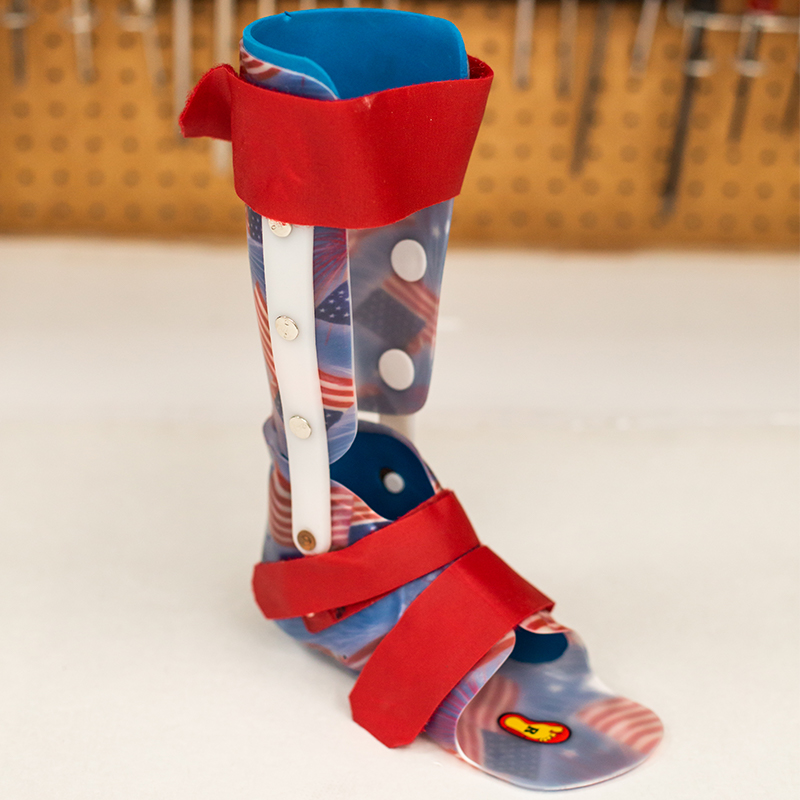
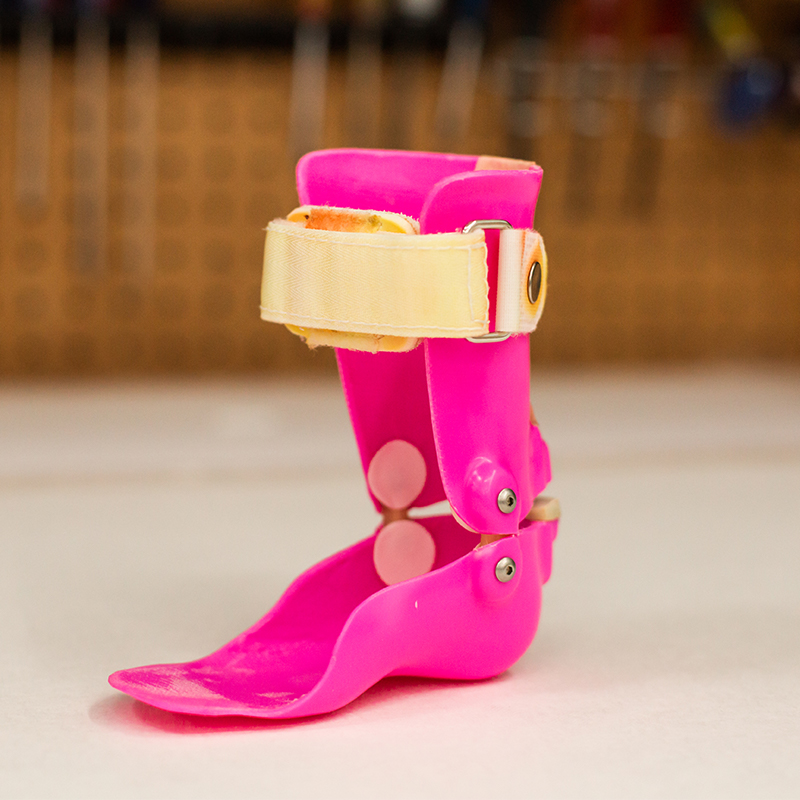
Corrective Shoes are designed to assist in the correction of flexible foot abnormalities, they are available in various styles and degrees of correction.
Denis Brown Splint is utilized for a wide array of pathologic foot alignment conditions, it is designed with bilateral metal footplates with an interconnecting spreader bar. The footplates are attached to the bottom surface of sturdy leather-soled shoes and can be easily adjusted for both internal and external foot rotations.
Supra Malleolar Orthosis (SMO) is used as an intermediate orthosis when an AFO is considered over bracing and a foot orthosis does not address specific needs of the patient. SMO supports the leg just above the ankle bones. Designed to maintain a vertical or neutral heel while it supports the arches of the foot to improve balance and mobility.
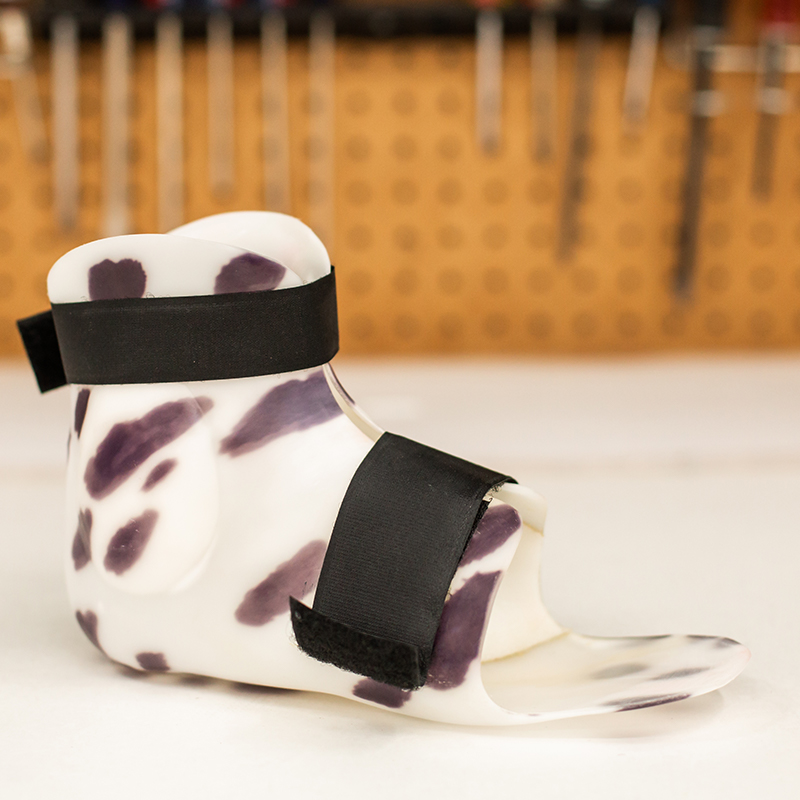
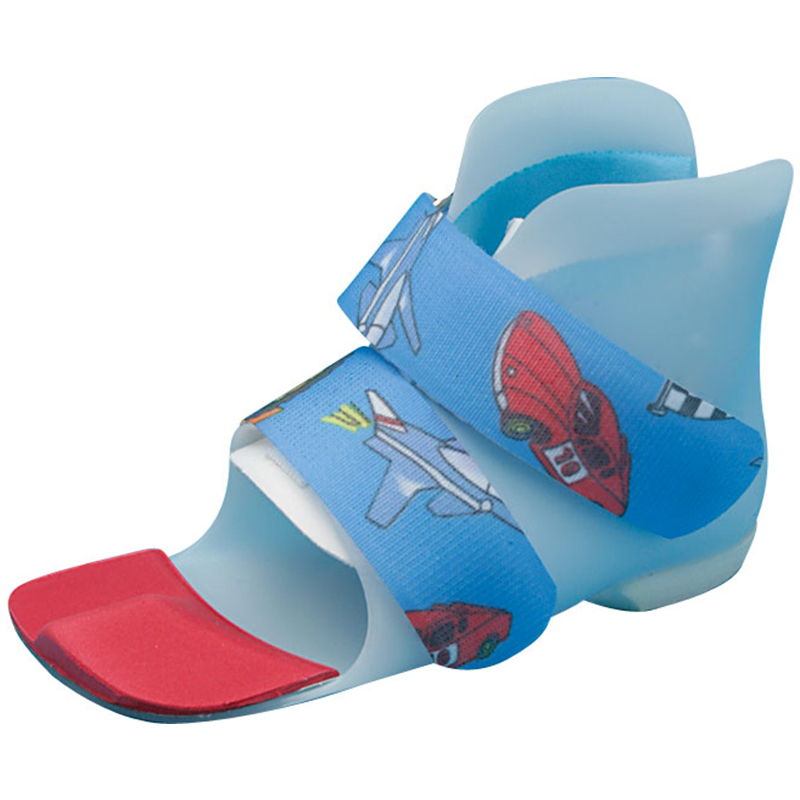
Genu Varum/Valgum KAFO includes either a single medial upright or single lateral upright, thigh and calf cuffs and free motion ankle joint attached to a sturdy shoe with the comparable sole.
Tibial Torsion Orthoses corrects tibial rotational deformities by isolating torsional forces at the proximal tibia without generating twisting forces on the femur and hip. These devices can be adjusted for height and internal-external rotation.
Pavlik Harness abducts and flexes the hips bilaterally to assist in properly maintaining the femoral head within the acetabular socket. Velcro fastening straps allow for easy adjustment.
Plastizote Hip Abduction Orthosis is designed to treat infants with hip dysplasia up to three years of age. It is constructed in firm plastizote or plastizote with reinforced polypropylene for added stability.
Static Hip Abduction Orthosis consists of a foam-lined metal pelvic band; bilateral aluminum sidebars attached to plastic foam lined thigh cuffs. The hip brace is designed to statically maintain the hips in an abducted position while preserving the proper relationship of the femoral head within the acetabular socket.
Scottish Rite (Atlanta) Hip Abduction Orthosis is an ambulatory brace consisting of a padded metal pelvic band, articulating thrush bearing hip joints attached to thermoplastic thigh cuffs. This orthosis allows for easy ambulation in children while assisting in the restoration of joint motion and containment of the femoral head within the confines of the acetabulum.
Standing Walking and Sitting Hip (SWASH) is a dynamic hip abduction orthosis designed to reduce hip abduction and internal femoral rotation associated with high adductor tone. This orthosis allows for a normal hip range of motion while reducing leg “scissoring” activity during gait.
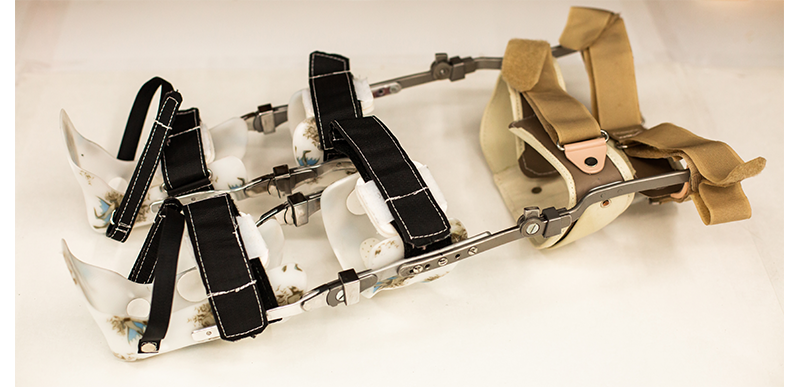
Adjustable Hip Abduction Orthosis improves hip alignment to encourage appropriate acetabular and femoral head remodeling. This adjustable brace allows for internal and external rotational hip adjustment.
Wheaton Brace applies a balanced three-point corrective principle to treat metatarsus adductus. The foot section incorporates a high medial counter providing abduction forces behind the hallux with the remaining fixation forces concentrated at the hindfoot and against the apex of the deformity. The splint is normally used in conjunction with a daily passive stretching regime consisting of abducting the forefoot on the rearfoot while maintaining the subtaylor joint in neutral.
Papoose CTLSO cradles a baby’s body, securely and gently immobilizing the head and spine in the proper anatomical airway and spinal alignment. The unique design allows for continued intimacy between the caregiver and child.
Torticollis Orthosis is used to treat a postural abnormality of the neck leading to head tilt and rotation. Classically, torticollis is categorized as congenital or acquired. Congenital muscular torticollis (CMT) is the most common form. Treatment for infants is a Tubular Orthosis for Torticollis (T.O.T.) collar, a lightweight PVC tubing that fits around the baby’s neck. The collar helps reduce neck contractures and restores proper head posture.
Cranial Remolding Helmet is a custom orthosis to treat deformational plagiocephaly, brachycephaly, and other head shape deformities in infants 3-18 months of age. The helmet orthosis provides total contact over the prominent areas of the skull and leaves a void over the flattened areas to facilitate more normal skull symmetry. The rigid outer shell maintains the structural design integrity and is either lined with closed cell foam to allow progressive adjustments or is made of a clear thermo-plastic material, which allows easy visual inspection of the areas of contact and voids within the orthosis. The helmets are modified throughout the treatment program to accommodate growth, promote symmetry and improve proportion. Treatment generally takes 3-4 months but varies depending on the patient’s age and severity of cranial asymmetry.
